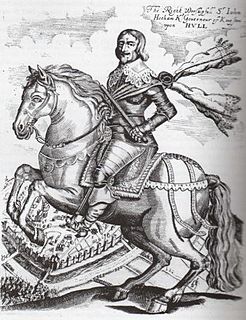
There have been three Baronetcies created for persons with the surname Cotton, all in the Baronetage of England. One creation is extant as of 2008.
The Ayloffe Baronetcy, of Braxted Magna in the County of Essex, was a title in the Baronetage of England. It was created on 25 November 1611 for Sir William Ayloffe, subsequently Member of Parliament for Stockbridge. The second Baronet was High Sheriff of Essex and supported the Royalist cause in the Civil War. The third Baronet was an officer in the Royalist army during the Civil War. The fourth Baronet was a London merchant. The fifth Baronet was Rector of Stanford Rivers in Essex from 1707 until 1730. The sixth Baronet was an antiquary. The title became extinct on his death 19 April 1781.

There have been six baronetcies created for persons with the surname Middleton, four in the Baronetage of England, one in the Baronetage of Great Britain and one in the Baronetage of the United Kingdom. One creation is extant as of 2008.

There have been seven baronetcies created for persons with the surname Parker, three in the Baronetage of England, two in the Baronetage of Great Britain and two in the Baronetage of the United Kingdom. Two of the creations are extant as of 2008. Though none of the different families of baronets were related, several supplied a number of flag officers to the Royal Navy.
There have been six Forster Baronetcies, four in the Baronetage of England, one in the Baronetage of Ireland and one in the Baronetage of the United Kingdom. All are extinct.
There have been five baronetcies created for persons with the surname Vavasour, three in the Baronetage of England and two in the Baronetage of the United Kingdom. As of 2008 four of the creations are extinct while one is extant.

There have been twenty baronetcies created for persons with the surname Williams, eight in the Baronetage of England, three in the Baronetage of Great Britain and nine in the Baronetage of the United Kingdom. Only five of the creations are extant as of 2017..
There have been five baronetcies created for persons with the surname Fraser, one in the Baronetage of Nova Scotia and four in the Baronetage of the United Kingdom. As of 2007 four of the creations are extinct while one is extant.
There have been seven baronetcies created for persons with the surname Powell, five in the Baronetage of England and two in the Baronetage of the United Kingdom. Only one creation is extant as of 2007.
There have been four baronetcies created for persons with the surname Musgrave, one in the Baronetage of England, one in the Baronetage of Nova Scotia, one in the Baronetage of Ireland and one in the Baronetage of the United Kingdom. As of 2014 two of the creations are extant.
There have been seven baronetcies created for persons with the surname Sinclair, six in the Baronetage of Nova Scotia and one in the Baronetage of Great Britain. Four of the creations are extant as of 2008.

There have been four baronetcies created for members of the ancient House of Beaumont, all in the Baronetage of England. All four creations are extinct or dormant.
There have been three baronetcies created for persons with the surname Foulis, one in the Baronetage of England and two in the Baronetage of Nova Scotia.
There have been two baronetcies created for members of the Barkham family, both in the Baronetage of England. Both creations are extinct.

Sir Heneage Finch was an English lawyer and politician who sat in the House of Commons at various times between 1607 and 1626. He was Speaker of the English House of Commons in 1626.
The Swan Baronetcy, of Southfleet in the County of Kent, was a title in the Baronetage of England. It was created on 1 March 1666 for William Swan. The title became extinct on the death of the second Baronet in 1712.
There have been five baronetcies created for persons with the surname Wentworth, four in the Baronetage of England and one in the Baronetage of Great Britain. All creations are extinct.
There have been two baronetcies created for members of the Morres, later de Montmorency family, both in the Baronetage of Ireland. Both creations are extinct.
There have been four baronetcies created for persons with the surname Bennet, two in the Baronetage of England and two in the Baronetage of Nova Scotia. All four creations are extinct.

Sir Humphrey Forster, 2nd Baronet was an English politician who sat in the House of Commons at various times between 1677 and 1695.








